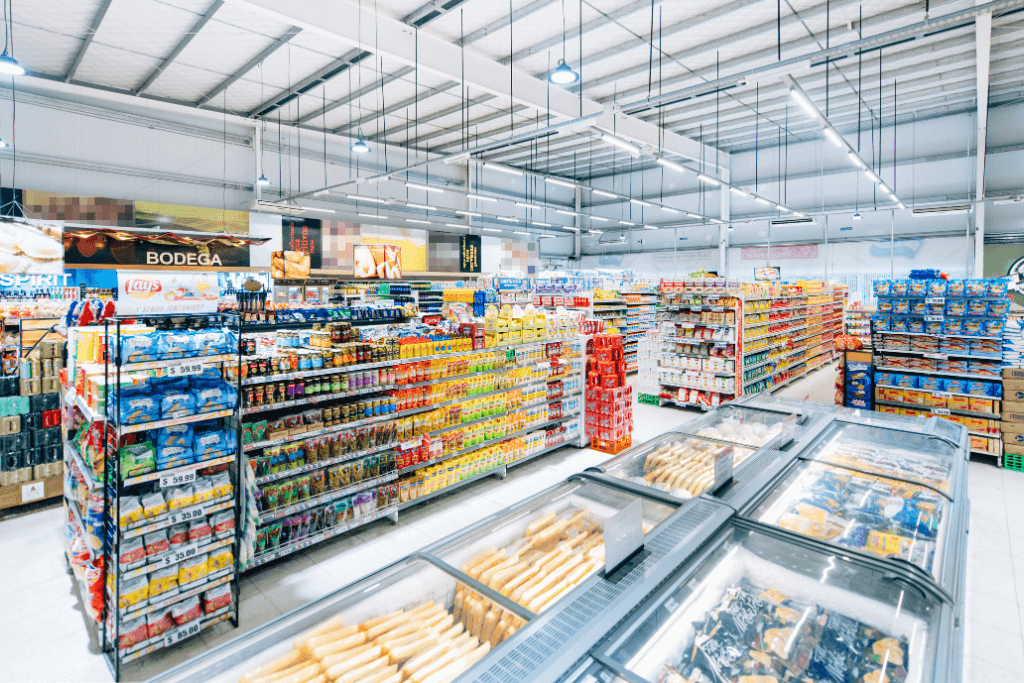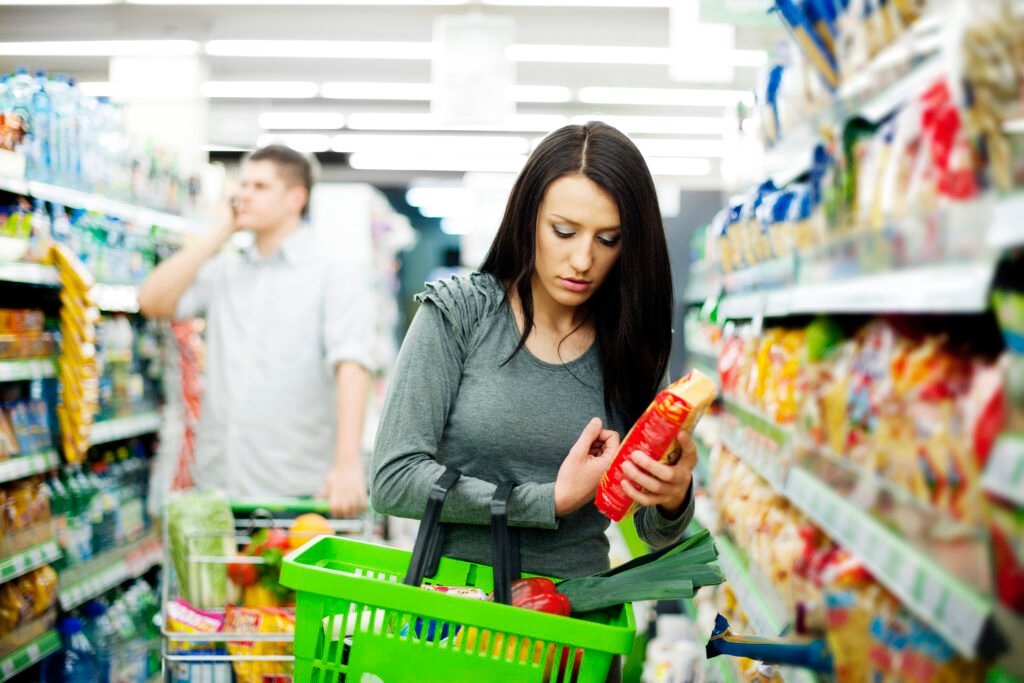When you grab a chocolate bar, open a juice bottle, or pick up a packet of chips, have you ever noticed the packaging? That little wrap or bottle is more than just a container—it’s your first interaction with the product, the shield that keeps it safe, and a way to make it stand out on a crowded shelf. Retail product packaging does all of this and more.
Smart FMCG product packaging can influence buying decisions, preserve product quality, and even reduce waste during transport. Today, brands know that packaging for consumer packaged goods is a silent salesperson that works 24/7, whether it’s attracting attention or ensuring the product arrives intact.
This guide takes you through the world of FMCG packaging—its types, functions, and trends. We’ll also explore how FMCG packaging companies like Falcon Gallant are innovating with sustainable packaging solutions and eco friendly packaging to make sure products reach consumers safely, efficiently, and with their quality intact.
What is FMCG Packaging?
Definition of FMCG Packaging
FMCG packaging refers to the materials and techniques used to protect, store, and present fast-moving consumer goods. From snacks and beverages to personal care items, packaging is often the first point of contact between a brand and a consumer. From snacks to beverages, consumer packaged goods rely heavily on well-designed packaging to stand out in a competitive market
Good fmcg product packaging doesn’t just protect—it communicates the brand’s story. Colors, typography, and imagery are carefully chosen to make products attractive and memorable.
Importance for Product Safety
Safety is at the heart of packaging for FMCG. Products are exposed to handling, storage, and transit risks. Without proper FMCG packaging materials, contamination, spoilage, or damage can ruin both the product and the brand’s reputation.
Examples
- Airtight snack pouches maintain freshness.
- Sealed beverage bottles prevent leaks and contamination.
- Foil-wrapped chocolates keep flavor and texture intact.
Importance for Marketing and Branding
Beyond protection, FMCG packaging acts as a powerful marketing tool. It grabs attention, builds recognition, and conveys quality without words.
Brand colors, typography, and logo placement make products stand out on retail shelves. Whether it’s luxury chocolates with embossed foil or beverages with bold, vibrant labels, packaging FMCG plays a key role in shaping consumer perception.
Importance for Logistics and Distribution
Well-designed FMCG packaging materials simplify storage, stacking, and transport. Standardized cartons and protective layers reduce damage and speed up handling.
Example: Beverage cartons designed to fit perfectly on pallets make warehouse management and shipping more efficient.
Falcon Gallant’s Role in FMCG Distribution
Falcon Gallant ensures that FMCG packaging companies’ products are handled carefully during transport. Their expertise preserves product integrity from manufacturer to retailer, giving brands confidence that consumers receive items as intended.
The 3 Main Levels of FMCG Packaging
1. Primary Packaging
Primary packaging is the first layer that comes into direct contact with the product. Its role is protection, preservation, and convenience.
Examples: Chocolate bar wrappers, beverage bottles, toothpaste tubes. Features like resealable packs or tamper-proof seals are increasingly common. Smart fmcg product packaging at this level can make a big difference in how consumers perceive a product.
2. Secondary Packaging
Secondary packaging groups multiple products together for storage, display, or shipping.
Examples:
- A box of assorted chocolates.
- A six-pack of beverages in shrink wrap.
Packaging for FMCG at this level ensures smooth handling, easier stacking, and attractive shelf presentation.
3. Tertiary Packaging
Tertiary packaging is used for bulk transport and warehouse handling. It protects goods during shipping and storage.
Examples: Pallets of chocolate cartons wrapped in plastic, stacks of beverage cartons secured for transit. Proper FMCG packaging materials at this stage reduce damage and improve shipping efficiency.
Key Functions of FMCG Packaging
1. Protection and Preservation
The primary function of FMCG packaging is protection. Good fmcg product packaging shields goods from damage, contamination, and spoilage.
2. Branding and Shelf Appeal
Packaging FMCG products effectively communicates brand identity. Design elements like colors, typography, and imagery create a strong visual impression.
Luxury brands might use metallic foils or embossed designs, while everyday snacks focus on vibrant labels and appealing graphics. Smart packaging for FMCG helps consumers notice, remember, and trust a product.
3. Consumer Convenience
Modern consumers expect FMCG packaging to be convenient. Easy-to-open packs, resealable pouches, and lightweight bottles improve usability.
Examples: Portion packs, resealable snack bags, and ergonomic beverage bottles. Convenience-focused fmcg product packaging encourages repeat purchases and customer loyalty.
4. Compliance and Safety Regulations
FMCG packaging materials must comply with legal requirements. This includes ingredient lists, expiry dates, barcodes, QR codes, and nutritional information.
Clear, compliant packaging for FMCG products protects consumers and reduces legal risks for brands.
Trends in FMCG Packaging
As consumer expectations evolve, the future of FMCG packaging is being shaped by both innovation and responsibility. With growing environmental awareness, brands are shifting towards sustainable packaging solutions that balance functionality with eco-conscious design. Eco friendly packaging not only appeals to conscious consumers but also helps companies align with global sustainability goals, creating a win–win for business and the planet.
1. Smart Packaging with QR Codes
Interactive FMCG packaging adds value beyond protection. QR codes connect consumers to recipes, contests, discounts, or product information.
Example: A juice brand linking a QR code to a seasonal smoothie recipe engages customers while enhancing the brand experience.
2. Minimalistic and Clutter-Free Designs
Clean, minimal packaging is gaining popularity. Minimalistic fmcg product packaging focuses on essential brand elements without overwhelming consumers.
Example: Single-color backgrounds, bold fonts, and clear product names offer a modern, premium look.
3. Premium Packaging for Gifting
High-quality finishes and unique designs make packaging FMCG ideal for gifting.
Example: Luxury chocolate boxes, festive beverage hampers, and gift packs with elegant designs stand out in retail environments and boost perceived value.
5.Tamper-Proof and Child-Safe Designs
Safety is paramount. FMCG packaging materials now include child-resistant caps, tamper-proof seals, and secure closures. This protects both consumers and brands from mishaps or contamination.
FMCG Packaging in the Supply Chain
1. Impact on Shipping Efficiency
Efficient FMCG packaging reduces damage in transit and optimizes freight space. Stackable cartons and protective materials improve logistics outcomes.
2. Role in Storage and Shelf Life
Proper fmcg product packaging preserves quality in warehouses and on retail shelves. Moisture-resistant and temperature-stable materials extend shelf life and enhance consumer satisfaction.
3. Packaging as a Factor in Cost Management
Material choice, weight, and design directly impact shipping and handling costs. Durable yet lightweight FMCG packaging materials help brands save money while maintaining protection.
Example – Confectionery Packaging for Transit Protection
Delicate products like chocolates require crush-proof and temperature-stable fmcg product packaging. Special cartons and inner layers ensure safe delivery to retailers.
Falcon Gallant’s Role in Streamlining the Supply Chain
Falcon Gallant integrates FMCG packaging expertise with logistics efficiency, ensuring products are delivered safely and cost-effectively. Their approach protects brands’ reputations while delighting consumers.
Conclusion
FMCG packaging is more than a container—it’s a protective shield, a marketing tool, and a logistical solution. From primary wrappers to tertiary cartons, fmcg product packaging influences perception, preserves quality, and simplifies supply chains.
Choosing the right packaging for FMCG products helps brands stand out, maintain integrity, and keep customers happy. Companies like Falcon Gallant offer end-to-end packaging FMCG and distribution services, ensuring products reach consumers efficiently and in perfect condition.
FAQs on FMCG Packaging
1. What is FMCG packaging?
It’s the materials and designs used to protect, store, and present fast-moving consumer goods.
2. Why is packaging important in FMCG?
It ensures safety, attracts buyers, provides convenience, and meets regulatory requirements.
3. What types of FMCG packaging exist?
Primary (direct contact), secondary (groups of products), and tertiary (bulk transport).
4. How does FMCG packaging affect the supply chain?
Good packaging reduces damage, optimizes storage, and lowers logistics costs.
5. What are the current trends in FMCG packaging?
Smart QR codes, minimalistic designs, premium gifting packs, and tamper-proof/child-safe packaging.
6. How does Falcon Gallant support FMCG packaging and distribution?
Falcon Gallant offers complete FMCG packaging and logistics solutions, ensuring products are handled safely and delivered efficiently.



